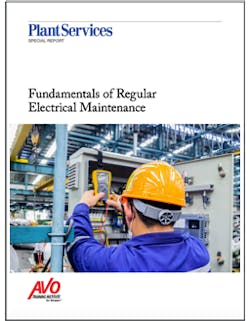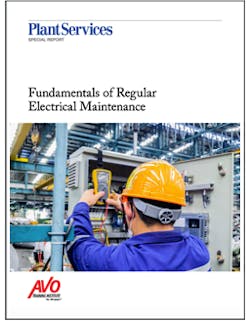Electrical safety FAQ: What you need to know to stay safe
Establishing a successful electrical safety program is a top priority for all facilities. No company wants to experience the devastating human and finance costs of an electrical accident that could have been avoided. But in a world where industrial technologies and regulations are evolving at ever-increasing speeds, keeping pace with best practices can feel like a daunting task. Am I implementing the right products and technologies necessary to keep my workers safe? What new changes were introduced in the latest version of NFPA 70E, and is my plant still compliant?
To help you better navigate the treacherous field of electrical safety, here are answers to some of the industry’s most frequently asked questions.
Is more PPE always better?
Whether to wear PPE and how much to wear are not personal decisions. A component can fail at any time. Perfectly good breakers can fail suddenly during troubleshooting. If an arc flash occurs while simply opening a cabinet, wearing the correct PPE can mean the difference between life and death. Electricians and technicians must follow the detailed PPE standards specified in the National Fire Protection Association (NFPA) 70E Standard for Electrical Safety in the Workplace. However, requiring workers to wear PPE rated for a much higher hazard level than the environment calls for will not necessarily make them safer.
“More PPE is not necessarily better,” says Kevin Taulbee, electrical engineer and safety trainer at Power Studies Inc. “Having the right PPE is what counts. Performing proper job hazard analysis is important for equipping workers with the correct PPE. Too many people just go out and purchase arc-flash moon suits and thick, high-voltage linemen gloves for their in-house maintenance and electrical workers. Class 2 electrical gloves aren’t necessary if they never get into anything over 480 volts, and they offer much less dexterity. As a result, an electrician may be more likely to drop a tool or lead when working in an energized panel.”
Sean Silvey, product specialist, Fluke Corp.
4 myths about electrical safety
What is an incident energy analysis?
Now that we know that an arc flash hazard or incident energy analysis is required, what exactly does this look like? In a nutshell, mathematical methods are used to determine and, if possible, reduce the risk of personal injury as a result of exposure to incident energy from an arc flash. The purpose of the incident energy analysis is to identify the worker’s incident energy exposure, the arc flash boundary, the appropriate working distance, and the PPE’s required calorie rating.
The magnitude of the arc flash hazard is determined by the NFPA 70E equations or the IEEE 1584 standard, which was derived from actual test data. Arc flash hazard is expressed in incident energy with the units cal/cm2. Also, arc flash protective clothing is rated in arc thermal performance value (or ATPV), which is also expressed in cal/cm2. Essentially, you need to be certain that the cal/cm2 rating of the PPE you’re wearing is greater than the calculated incident energy (or cal/cm2) of the equipment you’re working on. With a proper arc flash study, this information should be presented on the arc flash label.
Ryan Downey, P.E., AVO Training Institute
Why you need an incident energy/arc flash analysis
Should my facility implement smart labels?
Digital labels can improve safety and efficiency in the facility, but managers should expect to experience some challenges with this new digital technology:
- Implementing a proper cloud database solution: A central cloud-enabled database will need to be deployed to link the digital labels to required information. All appropriate workers will need to be able to access this database, and certain others should be given editing rights.
- Providing the necessary equipment: It will be necessary to deploy mobile and handheld technology that can read bar and QR codes.
- Complying with additional standards: Equipment labeling will still need to comply with regulations established by the National Electrical Code (NEC), the American National Standards Institute (ANSI) and Underwriters Laboratories (UL).
Eddie Jones, Schneider Electric
NFPA 70E labeling for a digital age
Will absence-of-voltage testers ever earn industry acceptance?
For more than a decade, users have deployed permanent electrical safety devices (PESDs) to reduce the risks in isolating electrical energy. This elegantly simple innovation increases the probability that workers are exposed only to “zero voltage” when doing an absence-of-voltage test.
The cumulative experiences that thousands of end users have amassed by using PESDs encouraged UL to create a new product specification for permanently mounted absence-of-voltage testers (AVTs). Because UL acted, the 2018 edition of the NFPA 70E 120.5(N) also included an exception allowing AVTs to be another way to create an electrically safe work condition – an alternative to a portable voltmeter. Perhaps the real accomplishment in the NFPA 70E 120.5(N) is that foundational principles for permanent voltage test devices now exist in a consensus standard.
Philip Allen, Grace Engineered Products
Obsoleting the absence-of-voltage test?


